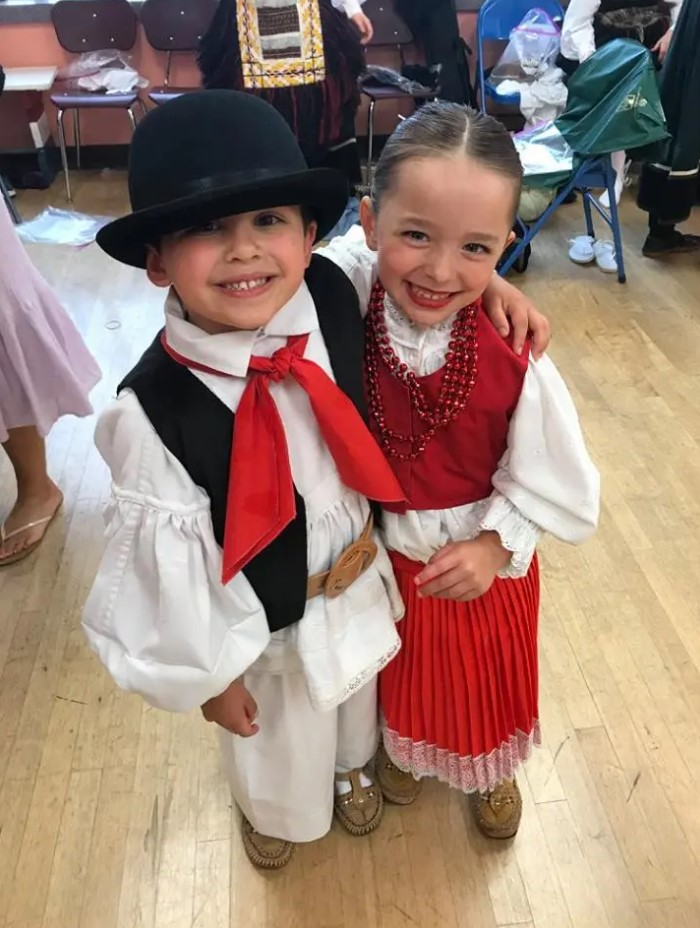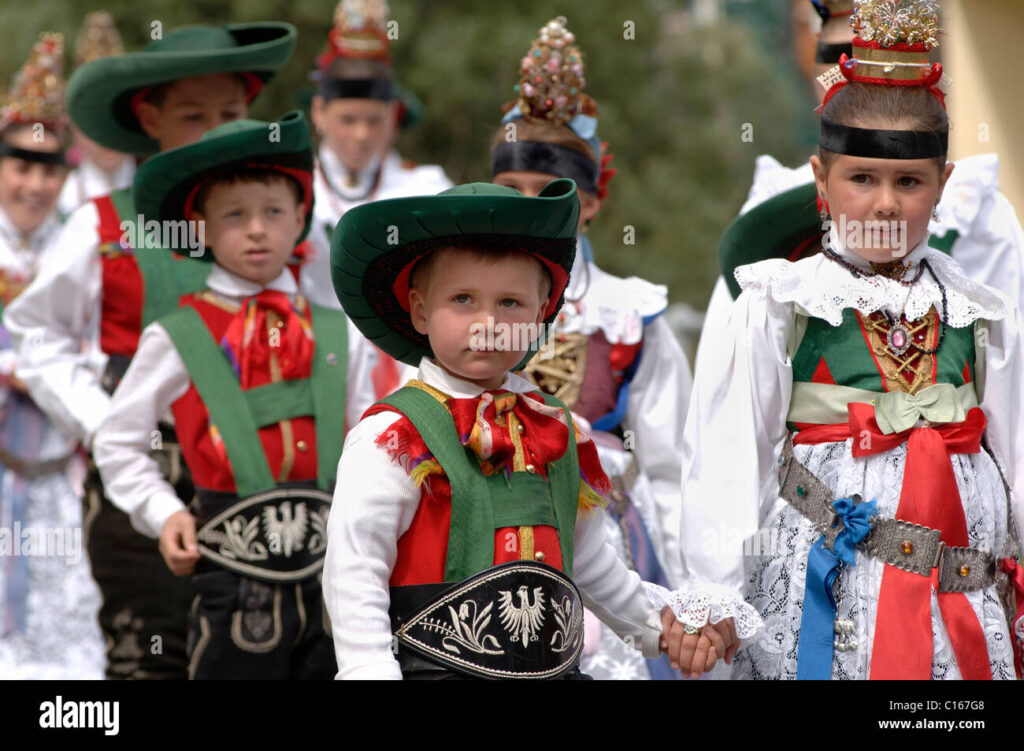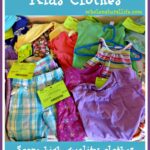Italian traditional clothes for kids have a rich history. They reflect the culture and heritage of Italy.
These garments showcase unique styles and vibrant colors. Understanding the evolution of these clothes offers a glimpse into Italian society. From festive occasions to everyday wear, traditional outfits tell stories of family and tradition. Today, modern trends blend these classic styles with contemporary designs.
This mix keeps the charm alive while making them suitable for today’s children. Parents often seek these clothes for special events, celebrating their roots. In this blog post, we will explore the history of Italian traditional clothes for kids and how modern trends have transformed them. Discover how these timeless pieces continue to inspire the next generation.
Table of Contents
Roots Of Italian Traditional Attire
Italian traditional clothes for kids are rich in culture and history. They tell stories of the past. Each piece has a meaning and a purpose. The roots of these garments lie deep in Italy’s diverse regions. Understanding these roots helps appreciate their beauty.
Influence Of Regional Diversity
Italy is made up of 20 regions. Each region has its own unique culture. This diversity shapes traditional clothing styles. Here are a few examples:
- North Italy: Known for wool and heavier fabrics.
- Central Italy: Emphasizes silk and lighter materials.
- Southern Italy: Bright colors and vibrant patterns.
These styles reflect local traditions and lifestyles. For instance, children in the Alps wear warm, layered outfits. Coastal regions favor lighter, breezy clothes. Each garment serves a purpose, offering comfort and protection.
Historical Significance
The history of Italian clothing dates back centuries. Traditional attire often marks festivals and important events. For example, during a wedding, children wear special outfits. These outfits symbolize family heritage and pride.
Historical influences include:
| Influence | Description |
|---|---|
| Roman Times | Simple tunics and cloaks for all ages. |
| Renaissance | Rich fabrics and elaborate designs. |
| Folk Traditions | Bright colors and hand-stitched details. |
Each period added layers of meaning to traditional clothes. These garments connect children to their ancestors. They remind us of Italy’s rich past.
Key Elements Of Classic Italian Children’s Garb
Italian children’s clothing blends history and style. It showcases unique elements that reflect the culture. Traditional garments often feature specific fabrics, designs, and patterns. Understanding these key elements reveals the charm of Italian fashion for kids.
Common Fabrics And Textiles
Fabrics play a crucial role in Italian children’s clothing. Italian artisans are known for their quality textiles. Here are some common fabrics used:
- Cotton: Soft, breathable, and perfect for daily wear.
- Linen: Light and airy, ideal for warm weather.
- Wool: Warm and durable, often used in colder months.
- Silk: Luxurious and elegant, used for special occasions.
Each fabric enhances comfort and style. The choice of textiles reflects both tradition and practicality.
Iconic Designs And Patterns
Designs and patterns are essential in Italian children’s clothing. They tell stories and express creativity. Some iconic designs include:
- Checkered Patterns: Classic and stylish, often seen in shirts.
- Stripes: Timeless, used in various outfits.
- Florals: Bright and cheerful, popular for dresses.
- Embroideries: Detailed and artistic, adding uniqueness.
These designs are vibrant and reflect Italian culture. They blend tradition with modern trends, creating a unique style for kids.
Ceremonial Outfits For Special Occasions
Ceremonial outfits are important in Italian culture. They mark special moments in a child’s life. These outfits blend tradition with modern style. Families often cherish these garments for generations.
Christenings And First Communions
Christenings and First Communions are significant events in Italy. Children wear beautiful outfits for these occasions.
- Christening Gowns: Traditionally white, symbolizing purity.
- First Communion Dresses: Elegant white dresses for girls.
- Suit and Tie: Common for boys, often paired with a vest.
Families dress their children in these outfits with love. Many choose to customize these garments. They may add embroidery or lace for a personal touch.
Festivals And National Holidays
Italy has many festivals and national holidays. Each event has its own special attire. Children wear outfits that reflect their local culture.
| Festival | Traditional Outfit |
|---|---|
| Carnevale | Colorful costumes and masks |
| Festa della Repubblica | Smart suits or dresses in national colors |
| La Befana | Traditional peasant costumes |
These outfits celebrate Italy’s rich heritage. They help children connect with their roots. Wearing traditional clothing is a way to honor their culture.
Incorporating Heritage In Everyday Wear
Italian traditional clothes for kids blend history with modern style. Parents want to keep cultural roots alive. This section explores how to mix traditional designs with everyday comfort. Let’s see how heritage can be stylish and practical.
Balancing Tradition And Comfort
Finding the right balance is key. Traditional Italian clothes often feature rich fabrics and intricate designs. These elements can sometimes be less comfortable for children. Modern adaptations focus on making these outfits more wearable.
Many designers create pieces that honor tradition while ensuring comfort. Soft fabrics and relaxed fits are now common. Here are some popular features:
- Lightweight materials for warm weather
- Stretchable fabrics for easy movement
- Simple designs for everyday wear
This approach allows kids to enjoy their heritage without sacrificing comfort. Parents appreciate the blend of style and practicality.
Adaptations For Modern Lifestyles
Children’s lives today are busy and active. Traditional clothing needs to adapt to these modern lifestyles. Designers are creatively merging old and new. Here are some adaptations seen in today’s fashion:
| Traditional Aspect | Modern Adaptation |
|---|---|
| Heavy wool fabrics | Lightweight cotton blends |
| Elaborate embroidery | Simple prints and patterns |
| Structured dresses | Casual, flowy silhouettes |
| Formal shoes | Comfortable sneakers |
These changes ensure kids can wear traditional clothes daily. They feel free to play and move. Styles reflect their heritage while being suitable for school and playdates.
Influence Of Italian Folklore On Children’s Fashion
Italian folklore deeply influences children’s fashion. The stories, colors, and patterns from Italy’s rich history shape how kids dress today. Traditional clothes often tell tales of the past. They connect children to their roots. Modern designs blend these elements into everyday wear.
Fairy Tales And Historical Figures
Fairy tales play a big role in children’s fashion. Characters from stories inspire clothing designs. Popular tales often include:
- Cinderella
- Little Red Riding Hood
- Pinocchio
These characters wear outfits that reflect their stories. For example, Little Red Riding Hood’s cape is a favorite. Children love dressing as their heroes. This trend helps them feel connected to Italian culture.
Historical figures also influence styles. Icons like:
- Giuseppe Garibaldi
- Leonardo da Vinci
- Maria Montessori
These figures inspire designs that are both stylish and educational. Kids can learn about Italy’s history through fashion. This blend of history and play enriches their experience.
Folk Patterns In Modern Designs
Folk patterns are a key part of Italian children’s clothing. These designs come from various regions in Italy. They often feature:
| Region | Pattern Style |
|---|---|
| Tuscany | Colorful florals |
| Umbria | Geometric shapes |
| Sicily | Bright, bold colors |
These patterns appear in dresses, shirts, and accessories. Children wear them to show their heritage. Modern designers adapt these styles for today’s kids. The result is a fresh look that keeps tradition alive.
Fashion shows often feature these designs. They celebrate Italian culture through children’s wear. Parents appreciate the blend of tradition and style. It makes dressing fun and meaningful.
Preserving Craftsmanship In Kid’s Clothing
Preserving craftsmanship in kid’s clothing is vital. It connects traditions with today’s fashion. Italian traditional clothes for kids showcase skills passed down through generations. This section explores artisanal techniques and the importance of supporting local tailors and artisans.
Artisanal Techniques
Artisanal techniques are the heart of Italian clothing. These methods ensure quality and uniqueness. Craftsmen use traditional tools and skills. Here are some key techniques:
- Hand-stitching: This method is precise and durable.
- Natural dyes: These create vibrant colors without chemicals.
- Embroidered details: Hand embroidery adds a personal touch.
- Tailored fits: Custom fits ensure comfort and style.
Each technique reflects a commitment to quality. Children can wear clothes that last. They also carry stories of tradition.
Supporting Local Tailors And Artisans
Supporting local tailors and artisans strengthens communities. Each purchase helps preserve Italian heritage. Here are benefits of choosing local craftsmanship:
| Benefit | Description |
|---|---|
| Quality over quantity | Locally made clothes often use superior materials. |
| Unique designs | Artisans create distinctive pieces, not mass-produced items. |
| Environmental impact | Local production reduces carbon footprints. |
| Community support | Buying local helps sustain jobs and families. |
Choosing local artisans supports craftsmanship. It ensures the next generation enjoys quality clothing. Kids’ fashion can be stylish and meaningful.
Contemporary Brands Reviving Traditional Styles
Many brands are bringing back traditional Italian styles for kids. They mix old designs with modern ideas. This blend creates unique outfits that kids love to wear. The focus is on keeping the rich history alive while appealing to today’s tastes.
Innovative Approaches To Classic Garments
Brands today are using fresh ideas to recreate classic garments. They take traditional pieces and give them a modern twist. Here are some innovative approaches:
- Bright Colors: Classic garments are often available in vibrant colors.
- Mixing Fabrics: New materials and textures are combined with traditional fabrics.
- Fun Designs: Elements like cartoon characters and playful patterns are added.
- Comfort First: Modern cuts focus on comfort for active kids.
This approach keeps the essence of traditional clothing. It makes them appealing to the younger generation.
Sustainability In Children’s Fashion
Many contemporary brands focus on sustainability. They want to protect the environment while making stylish clothes.
Here are some sustainable practices:
| Practice | Description |
|---|---|
| Eco-Friendly Materials | Using organic cotton and recycled fabrics. |
| Local Production | Making clothes close to home to reduce transport emissions. |
| Timeless Styles | Creating clothes that last for years and can be passed down. |
| Minimal Waste | Using patterns that reduce leftover fabric. |
These practices help in creating a better future. They keep traditional styles relevant and eco-friendly.
Role Of Accessories In Traditional Italian Attire
The role of accessories in traditional Italian attire for kids is significant. Accessories complete the look. They add charm and character. Each piece tells a story. Understanding these accessories helps appreciate Italian culture.
Shoes And Headwear
Shoes and headwear are essential components of traditional outfits. They vary by region and occasion. Here are some common styles:
| Accessory | Description |
|---|---|
| Scarpe di Camoscio | Suede shoes, often worn for special occasions. |
| Sandali | Sandals, popular for summer festivals. |
| Cappello | Hats, often used to protect from the sun. |
| Fasce | Bands worn around the head, especially in rural areas. |
Shoes vary in style and material. They reflect local traditions. Headwear serves practical purposes and cultural significance.
Jewelry And Embellishments
Jewelry and embellishments add beauty to traditional outfits. They enhance the overall appearance. Common items include:
- Necklaces: Often handmade, featuring colorful beads.
- Bracelets: Worn to symbolize good luck.
- Brooches: Decorative pins that add a vintage touch.
- Embroidered Details: Common on dresses and shirts.
These embellishments tell stories of heritage. Each piece connects to family traditions. Children wear these accessories with pride.
The Global Appeal Of Italian Kidswear
Italian kidswear has a unique charm. Its blend of tradition and style attracts attention worldwide. The craftsmanship is exceptional, using high-quality fabrics. Parents love the way Italian clothes make their children look stylish and feel comfortable.
International Recognition
Italian kidswear enjoys recognition across the globe. Renowned brands like Gucci, Dolce & Gabbana, and Armani lead the way. These brands showcase Italian fashion in children’s clothing.
Many fashion shows feature Italian kidswear. Designers present creative collections that set trends. This visibility boosts the popularity of Italian children’s fashion.
Here’s a quick look at some top Italian kidswear brands:
| Brand | Founded | Specialty |
|---|---|---|
| Gucci | 1921 | Luxury fashion |
| Dolce & Gabbana | 1985 | Bold designs |
| Armani Junior | 1975 | Classic styles |
Cultural Exchange Through Fashion
Fashion is a form of cultural exchange. Italian kidswear blends styles from various cultures. It reflects a rich heritage and modern influences.
- Bright colors and patterns.
- Unique cuts and styles.
- Comfortable yet stylish designs.
International collaborations enhance this exchange. Designers from different countries inspire Italian brands. This leads to fresh ideas and new trends.
Children wear outfits that tell stories. Each piece connects them to different cultures. Italian kidswear is not just clothing. It’s a way to celebrate diversity.

Educational Aspect Of Traditional Clothing
The educational aspect of traditional clothing plays a vital role in children’s development. It teaches them about their culture and history. Wearing traditional clothes helps kids connect with their roots. They learn to appreciate their heritage in a fun way.
Teaching Heritage Through Dress
Traditional clothing serves as a learning tool. It helps children understand their family’s past. Here are some key points:
- Children learn about family traditions.
- They discover stories behind each garment.
- Wearing these clothes fosters pride in their culture.
Teachers often incorporate traditional attire into lessons. This creates an engaging learning environment. Kids remember these lessons longer when they wear the clothes. Dressing up becomes an exciting way to learn.
Cultural Events And School Programs
Schools host cultural events to showcase traditional clothing. These events allow children to participate and share their knowledge. Here are some common activities:
- Fashion shows featuring traditional outfits.
- Workshops on making traditional garments.
- Storytelling sessions about the history of clothing.
Such programs enhance students’ understanding of their culture. They learn the importance of maintaining traditions. Events like these build a sense of community and belonging.
Impact Of Media On Children’s Traditional Attire
The media plays a huge role in shaping what kids wear. Traditional Italian clothes for children have changed over time. Movies, TV shows, and social media influence these styles. Parents and kids see these representations and often want to adopt them. This section explores how media affects children’s traditional attire.
Representation In Film And Television
Film and television have a strong impact on children’s fashion. Italian films often showcase beautiful traditional outfits. Popular characters wear these clothes, making them desirable. Children see these outfits and want to dress like their favorite characters.
- Films depict festivals and celebrations.
- TV shows highlight family traditions.
- Characters in traditional clothing are often heroic.
These media portrayals make traditional attire appealing. Kids want to wear what they see on-screen. This desire promotes cultural pride and awareness.
Social Media Influencers
Social media has transformed how kids view traditional clothing. Influencers showcase Italian styles to large audiences. They often mix modern trends with traditional outfits.
| Influencer Type | Impact on Fashion |
|---|---|
| Fashion Bloggers | Highlight unique styles and outfits. |
| Parents | Share their children’s traditional outfits. |
| Kids’ Influencers | Promote fun and trendy takes on tradition. |
Kids follow these influencers for inspiration. They see how traditional clothes can be stylish. This leads to a blend of old and new. Traditional attire becomes trendy and fun.

Credit: alamy.com
Challenges Facing Traditional Italian Kidswear
Traditional Italian kidswear faces many challenges today. The rise of fast fashion and counterfeit products has made it hard for authentic designs to thrive. Parents want quality and style, but they also want affordable options. This section explores the difficulties traditional Italian kidswear encounters.
Counterfeit And Quality Issues
Counterfeit items pose a significant problem. Many fake brands copy traditional designs. These imitations often lack quality.
- Low-quality materials
- Poor craftsmanship
- Short lifespan of garments
Parents seek durable clothing for their children. Counterfeit products do not meet these needs. Authentic Italian brands focus on craftsmanship and heritage.
Competition With Fast Fashion
Fast fashion brands offer trendy styles quickly and cheaply. This attracts many parents looking for budget-friendly options. Traditional Italian kidswear cannot compete on price.
| Aspect | Fast Fashion | Traditional Italian Kidswear |
|---|---|---|
| Price | Low | Higher |
| Quality | Variable | High |
| Design | Trendy | Classic |
| Longevity | Short-term | Long-lasting |
Fast fashion offers quick trends. Traditional styles take time to create. Parents often choose convenience over quality.
To survive, traditional Italian kidswear must find ways to highlight its unique value. It must emphasize quality, heritage, and timeless style.
Looking Ahead: The Future Of Italian Traditional Clothes For Kids
The future of Italian traditional clothes for kids is bright. Designers blend old styles with modern trends. This mix keeps the essence of tradition alive while attracting new generations. Families will continue to cherish these unique garments.
Innovation In Design
New ideas in design are shaping the future. Young designers explore fresh patterns and colors. They use modern fabrics that are comfortable and easy to care for. This makes traditional clothes more appealing to parents and children.
- Eco-friendly materials: Many brands focus on sustainability.
- Smart textiles: Fabrics that adapt to weather changes.
- Mix of styles: Combining traditional and contemporary designs.
These innovations help kids express their identity. They enjoy wearing clothes that tell a story. Traditional garments are not just for special occasions anymore. They fit everyday life too.
Maintaining Relevance In A Changing World
Italian traditional clothes must stay relevant. Fashion trends change fast. To keep up, brands need to listen to what families want. Parents value quality and style. Kids want clothes that are fun and easy to wear.
| Trend | Impact on Traditional Clothes |
|---|---|
| Casual Wear | Encourages relaxed styles in traditional garments. |
| Digital Shopping | Increases accessibility and variety for families. |
| Global Influence | Brings new ideas to Italian traditional designs. |
Families want clothes that respect tradition but fit modern life. Designers are aware of these needs. They aim to create garments that honor Italian culture while appealing to today’s kids.
Frequently Asked Questions
What Are Traditional Italian Clothes For Kids?
Traditional Italian clothes for kids include colorful garments like the “carnival costume” and regional outfits. These reflect local customs.
How Do Italian Traditional Clothes Vary By Region?
Each region in Italy has unique styles. For example, the north showcases woolen fabrics, while the south often uses light cotton.
What Materials Are Used In Traditional Italian Kids’ Clothing?
Common materials include cotton, linen, and wool. These fabrics are durable and suitable for various climates in Italy.
Are Traditional Italian Outfits Still Worn Today?
Yes, many families wear traditional outfits during festivals and special occasions. This keeps cultural heritage alive.
What Are Modern Trends In Italian Kids’ Clothing?
Modern trends focus on comfort and style. Bright colors, playful designs, and eco-friendly materials are popular today.
Conclusion
Italian traditional clothes for kids blend rich history with modern style. These outfits reflect cultural pride and craftsmanship. Parents today appreciate the charm of traditional designs. Kids enjoy wearing vibrant colors and unique patterns. This fashion connects generations and celebrates heritage.
Choosing Italian clothes promotes quality and sustainability. Such clothing choices support local artisans and traditions. Embracing these styles offers a fun way to honor Italian culture. Kids not only look great but also feel connected to their roots. Explore Italian fashion for your little ones today.







